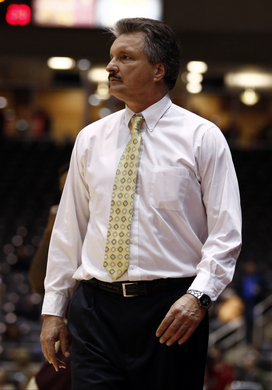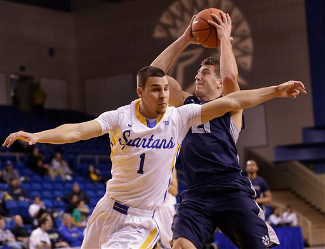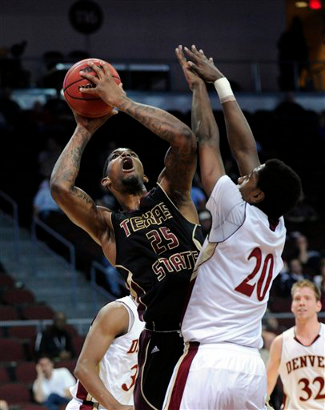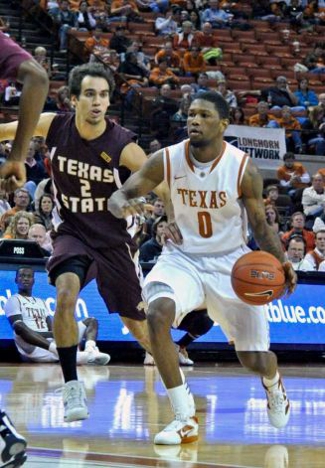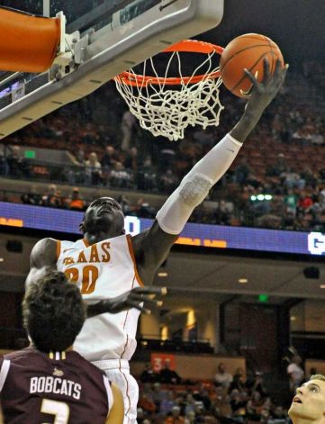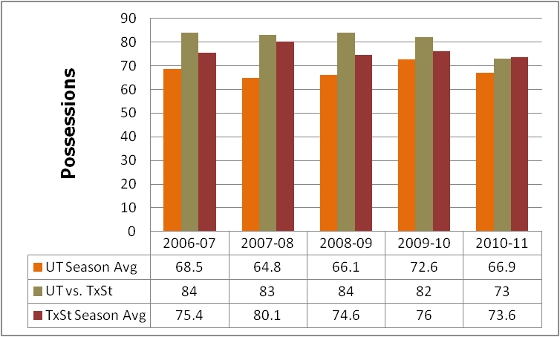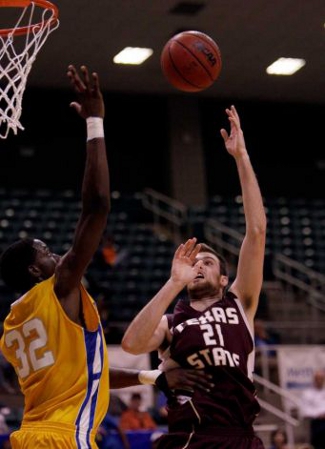Frank Erwin Center | Austin, TX | Tip: 7 P.M. CT | TV: LHN Vegas: Texas -22.5 | KenPom: Texas, 70-51 (98%) After a long week off for finals, the Texas Longhorns are back in action tonight, when they host Texas State in the first of a five-game homestand that will close out the non-conference slate. Although the Longhorns will face a pair of solid foes in Long Beach State and Stanford, they are still favored in each of those five games, with Ken Pomeroy currently giving Texas win percentages of at least 84% in all of them. Tonight’s game falls in that time frame that can usually lead to lackluster performances by good teams. For most major conference teams, this is the start of the easier portion of their schedule, having just wrapped up the November tournaments and early December power-conference matchups. Throw in finals and a short holiday break just around the corner, and you find that this is typically the weekend that contending teams look rather pedestrian.
Danny Kasar had a rough first year in San Marcos Even with the Longhorns favored by a massive spread, this would be a dangerous night for them to fall asleep on the job. Texas State is now in the second year of the Danny Kaspar era, and after a dreadful first season, he’s restocked the roster with a ton of JUCO talent. The Bobats have made nearly 40% of their threes this season, and have posted a defensive turnover rate of 25.7%, currently the 10th-best mark in Division I. Good three-point shooting is always an ingredient in upsets, and the Longhorns have also had trouble hanging on to the basketball. Although the Bobcats have taken a very small percentage of their shots from behind the arc, the interior size of the Longhorns will likely force them to spend more time on the perimeter tonight. If the Bobcats continue to shoot that well from beyond the arc, they could make things interesting. Thanks to the explosion of streaming options and the expansion of college basketball coverage in the nine years I’ve been writing on this website, it’s very rare that I haven’t been able to see an opponent at least once before writing a game preview. With the incredibly soft schedule that Kaspar lined up for November, this will be one of those situations. Texas State has played a pair of teams that aren’t in Division I, while their other four opponents have an average KenPom rank of 302.5. There are only 351 D-I teams. Without having seen the Bobcats play, the game preview will be quick and dirty, and really just consist of stats. In the team’s four D-I games, they utilized a seven-man rotation, with six of those players combining to play more than 84% of the available minutes. The seventh, JUCO combo guard Ethan Montalvo, averaged just under 15 minutes in D-I contests. Junior center Emani Gant (No. 21) and 6’7″ sophomore forward Kavin Gilder-Tilbury (No. 1) are both high-usage players for Coach Kaspar, utilizing 24% and 24.7% of the possessions when they’re on the floor. In last year’s meeting with Texas, the 6’8″ Gant found his time limited by foul trouble, but still scored seven points and logged four assists. Gilder-Tilbury also contributed seven against the Longhorns, but connected on just one of his five three-point attempts.
This is the only D.J. Brown picture I could find. The bulk of the backcourt minutes are chewed up by seniors D.J. Brown (No. 0) and Wesley Davis (No. 10). Brown is a graduate transfer from San Jose State, and his leadership at the point has filled a massive hole for the Bobcats. In D-I games, he’s posted an assist rate of 20.5% during his time on the floor, while turning it over on just 9.9% of the team’s possessions. Davis is an excellent defender, as evidenced by his 5.2% steal rate against D-I competition, currently the 23rd-best mark in the country. The Longhorns were able to avoid falling victim to his quick hands last year, as he logged just one steal in 17 minutes. Cameron Naylor (No. 24) and JaMarcus Witherspoon (No. 23) are two of the many JUCO additions to the Texas State roster. Naylor earned all-league honors in the Panhandle Conference last year, and has been the best offensive rebounder for the Bobcats so far this season, in terms of OR%. Witherspoon is a 6’4″ guard whose aggressive play has drawn more than five fouls per forty minutes. Keys to the game 1. Hang on to the ball – The Texas State defense doesn’t do a very good job of forcing bad shots, instead relying on turnovers to shut down their opponents. The Longhorns have had a rash of troubling turnovers with Isaiah Taylor out of action, so they will need to take care of the ball tonight. If they can avoid dumb turnovers, they should be able to find some very easy looks inside. 2. Dominate the glass – The size advantage should not only allow Texas to find easy looks inside, but should also allow them to limit second-chance opportunities, while earning some putbacks of their own. The Longhorns outrebounded a very large Kentucky team last Friday night, but fell victim to rebounds when it mattered most. It should be much easier tonight for Texas to impose their will on the glass from tip to final buzzer. 3. Limit damage from the perimeter – Texas State only takes 23.8% of their shots from beyond the arc, but they have yet to face a team with as much size as the Longhorns. The Bobcats have made 39.6% of their limited three-point attempts, so Texas needs to make sure that they are getting hands up and actually challenging any long-range shots that Texas State tries tonight. Gilder-Tilbury was the team’s best three-point shooter last year, but it’s been Brown who is leading the way this year, sinking 8-of-16 since arriving in San Marcos. |








